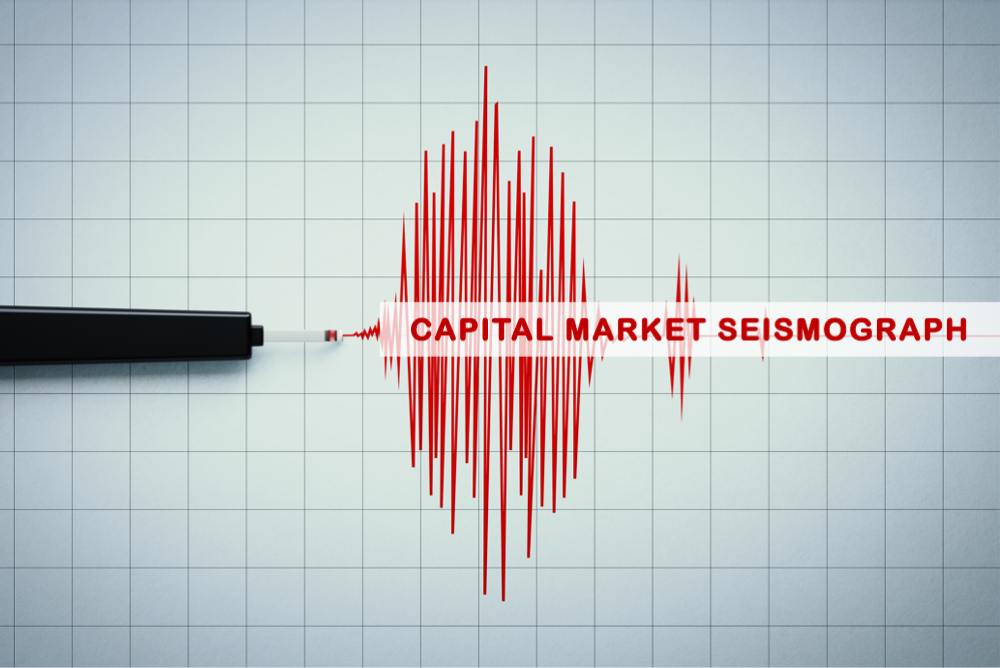Seismograph remains positive.

Despite all the uncertainty surrounding interest rates, the economy and corporate earnings, the capital market seismograph remains on track. "Most recently, even most input variables have increased the probability of calm, positive markets. The main culprits were changes in the yield curve and a slight brightening of the global economic climate," explains Oliver Schlick, Secaro, who regularly calculates the seismograph with his team and derives allocation decisions from it. His conclusion: "In sum, it remains the case that the state of the indicators continues to justify keeping equity exposure at the maximum allowable level."
As they know, the seismograph combines various economic variables - early economic indicators, interest rate developments or even price fluctuations on the stock markets. From these, it then distills the probabilities for three market states over the next month. Green stands for the expectation of a calm, positive market. If green dominates, investors should invest in equities. Yellow denotes the probability of a turbulent, positive market - which means investing, but with a sense of proportion. And red indicates the probability of a turbulent-negative market. In this case, abstinence from stock investments is the order of the day.
Since the beginning of May, "yellow" has already achieved by far the highest probability, with values above 70 percent. The rest is divided between "Red" and "Green", with "Red" recently even falling behind "Green". "The probability distribution thus remains in terrain that points to positive equity markets. We are watching this very closely, but see no reason to get off the gas at the moment," says Schlick
The bottom line:
The business cycle component of the private-wealth stock market indicator is positive. However, the drastic drop in industry business expectations in May calls for increased attention. We are now eagerly awaiting the results of the next ifo business climate index, which will be published on June 26. It could be that an economic sell signal will then emerge.
Because the German stock market is no longer undervalued - the Dax is trading close to its fair value - the strategic corridor for the equity allocation suggested by the model continues to lie between 65 and 95 percent of the individually envisaged equity allocation
Within this corridor, the results of the capital market seismograph define the exact equity quota. Since the seismograph suggests a maximum utilization within this range, the equity allocation of the private-wealth stock market indicator remains at 95 percent of the individual's intended equity allocation.
This indication of the individual intended equity allocation is important to us. Models such as the private-wealth stock market indicator can only ever be based on economic data. How high the individual equity allocation should be in times of war is a decision each investor must make based on his or her own risk appetite and risk tolerance.
Sincerely yours,
Klaus Meitinger
Note: Despite careful selection of sources, no liability can be assumed for the accuracy of the content. The information provided in private wealth is for information purposes only and does not constitute an invitation to buy or sell securities.
For a more detailed explanation of the private wealth stock market indicator, please read "News from the Editor - Strategic Buy Signal for German Stocks" dated January 25, 2023.